- Stated Weight (pair): 326 g
- Platform Area: 941 mm2
- MSRP: $220 USD
- Stated Weight (pair): 294 g
- Platform Area (mm2): 443 mm2
- MSRP: $220 USD
- Stated Weight (pair): 216 g
- Platform Area (mm2): 559 mm2
- MSRP: $220 USD
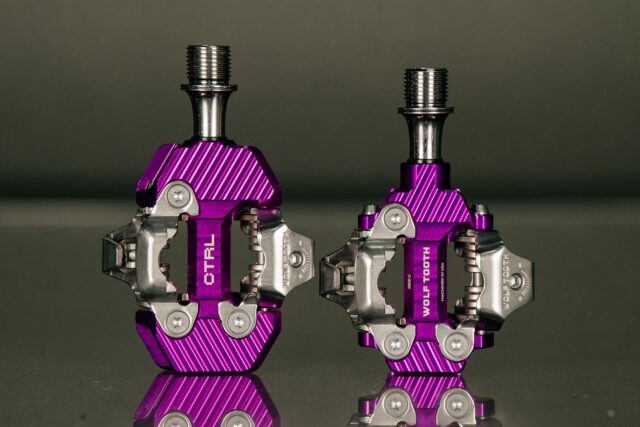
Intro
Wolf Tooth’s catalog has gotten impressively vast, and since they’ve been in the flat pedal game for a while now, it makes some sense that clip pedals would eventually join the Wolf Tooth family. Based around the tried-and-true SPD cleat design, the new CTRL, ALT, and DEL pedals target Trail, XC, and Gravel riders, respectively, with some clever features like a Q-factor adjustment system, a thin design, and robust internals. Of course, in typical Wolf Tooth fashion, they’re still machined in Minnesota, USA, too.
It’s clear that Wolf Tooth has spent some time thinking through these new pedals, so let’s crack into the details to see what they’ve done.
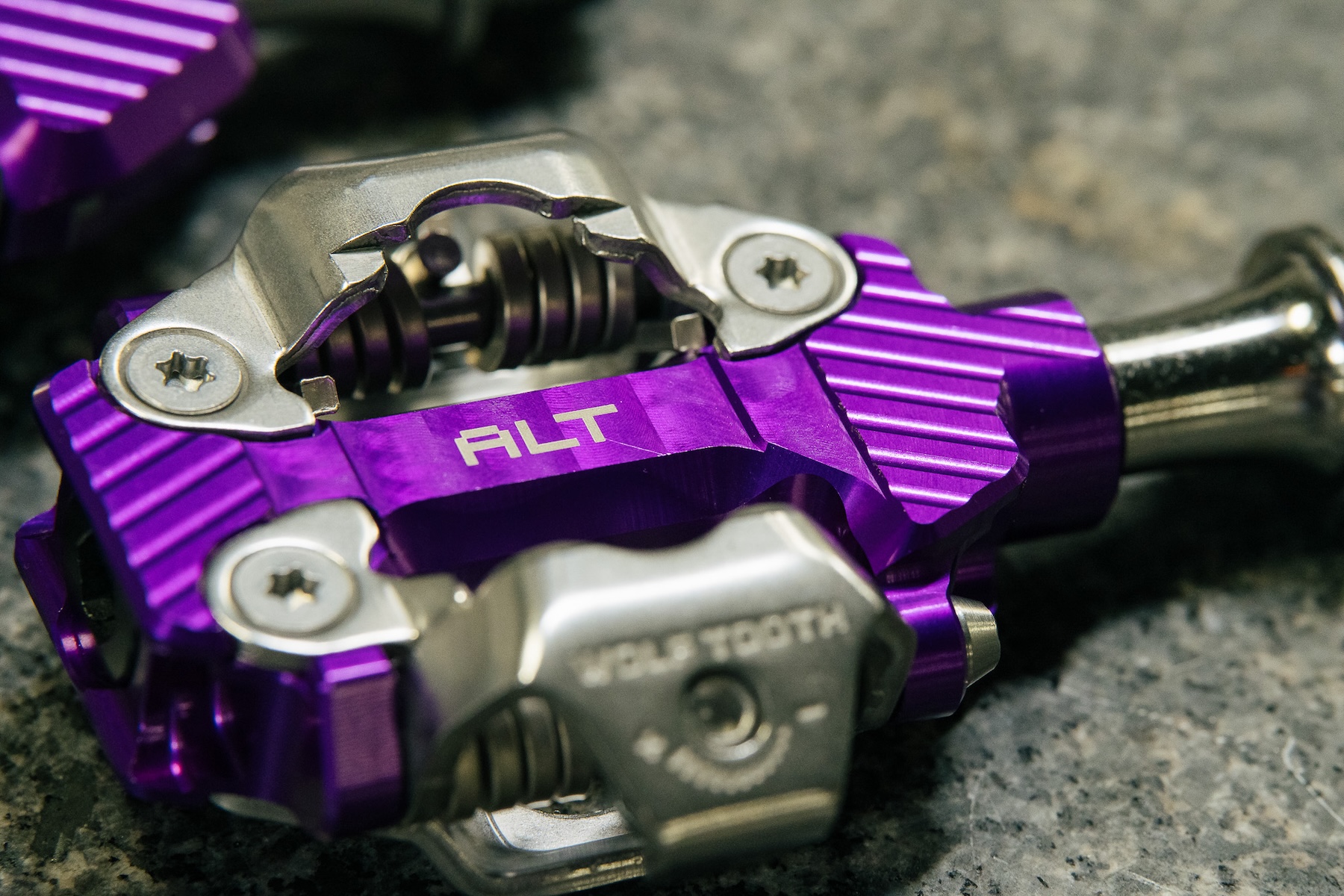
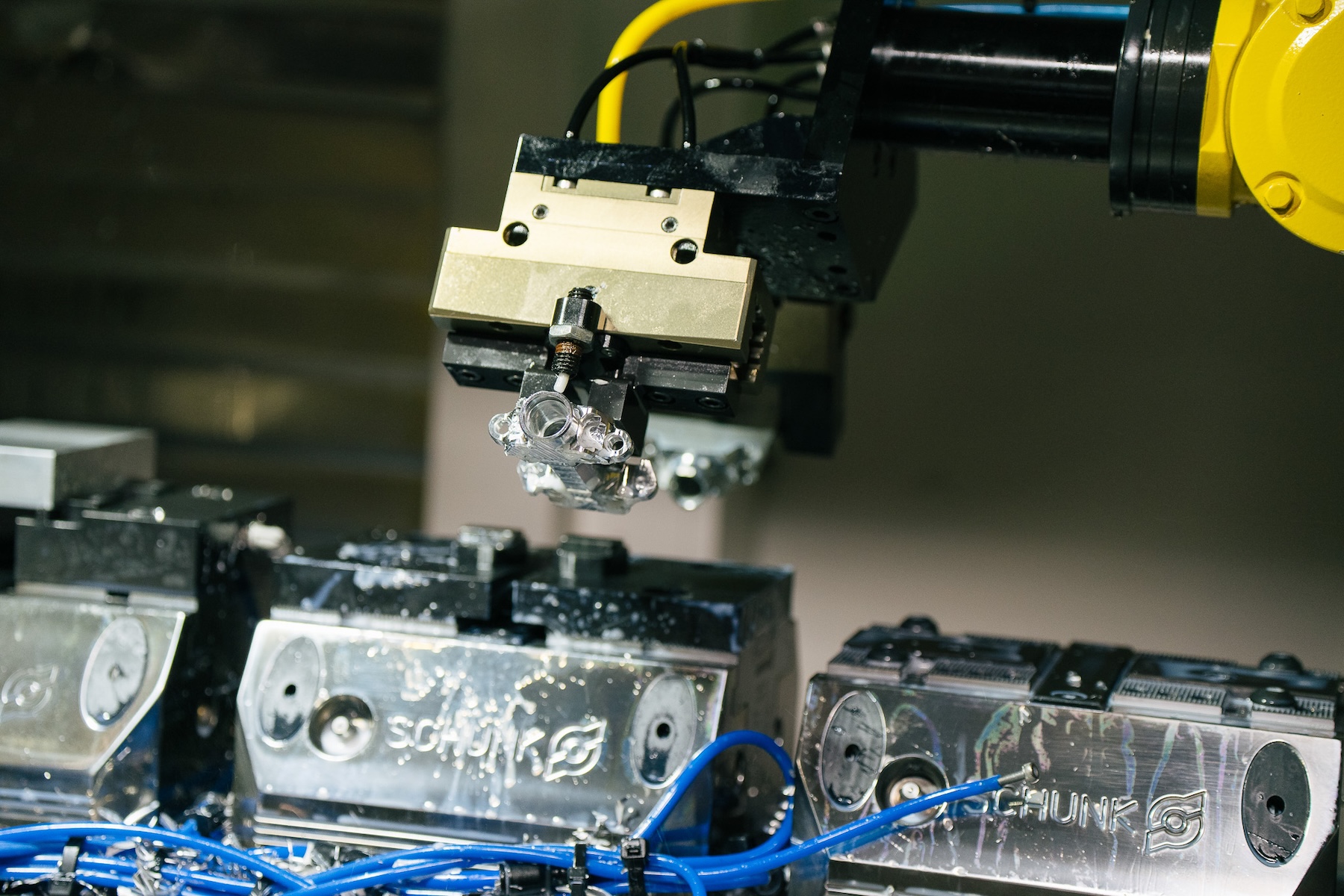
Design
Wolf Tooth hasn’t been afraid to take their own approach to a wide array of products, and that’s on display here with the new CTRL, ATL, and DEL pedals. Before we get into the details of each specific pedal, it’s worth noting that all three share some key features.
For starters, they’re all based on the longstanding SPD cleat design, with stainless steel binding cages and hardware. They turn on stainless steel axles and a triple bearing + bushing design borrowed from Wolf Tooth’s Waveform flat pedals, which also feature a custom radial seal to keep moisture and grit out of the internals.
Speaking of internals, Wolf Tooth has also come up with a crafty Q-factor adjustment system. For those unfamiliar, Q-factor is effectively a measurement of your stance width. Cranks can vary in their width and have an impact on Q factor as well, but given that we’re talking about pedals here, we’ll refer to Q-factor as Wolf Tooth does — the distance from where the axle meets the face of the crank arm to the center of the cleat interface. Wolf Tooth’s design for the CTRL, ALT, and DEL pedals uses movable internal spacers that can be reconfigured relative to the bearings to lengthen and shorten the exposed axle, creating a Q-factor adjustment range from 51 mm to 59 mm.
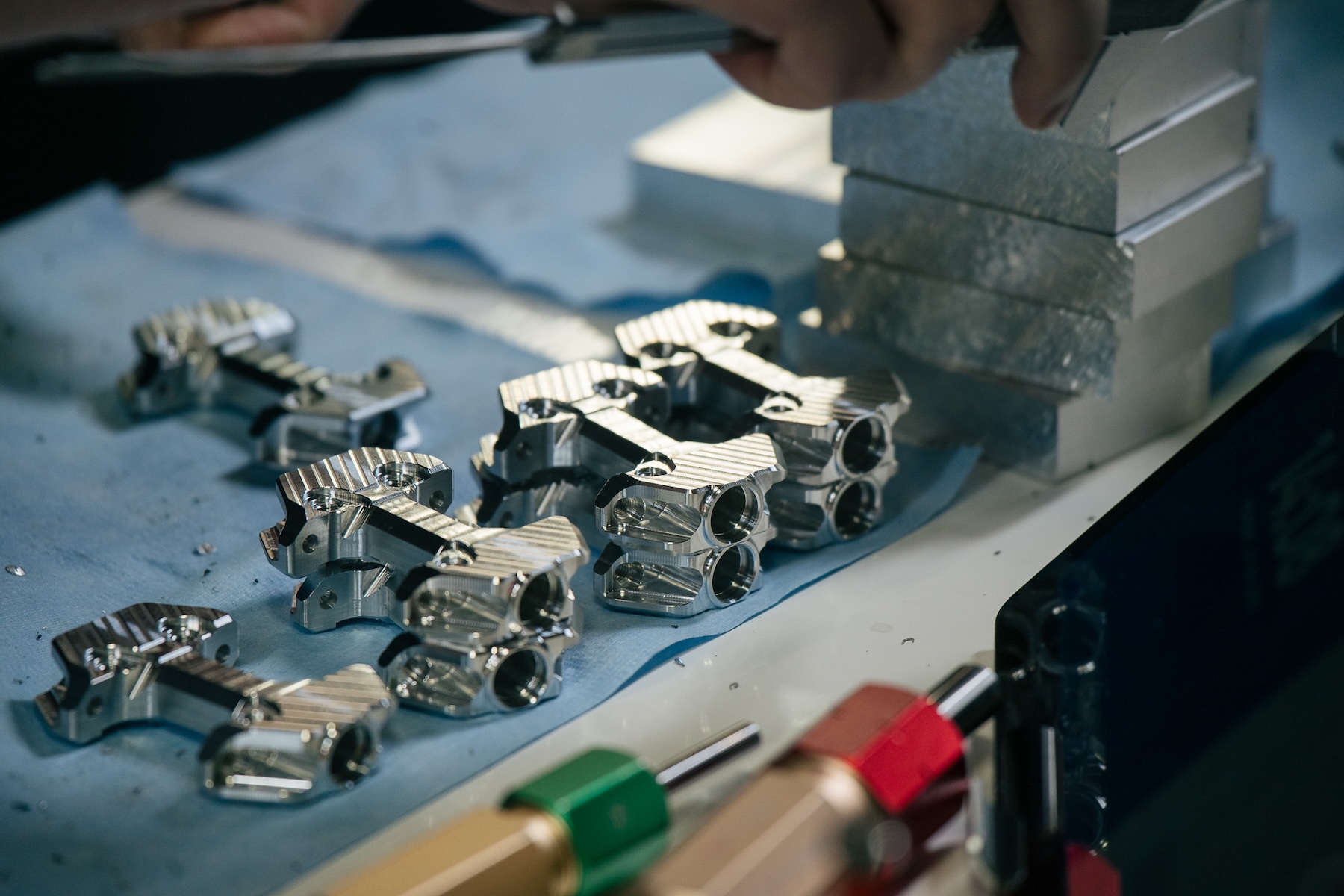
The standard configuration is set at 55 mm, and rearranging the stock spacers can shift 4 mm in either direction from there. Intermediate 53 mm and 57 mm options can be unlocked by purchasing a 2 mm spacer kit from Wolf Tooth. Wolf Tooth provides instructions and a video guide for the adjustment process, which they say takes about five minutes and uses common tools.
While Wolf Tooth says that their included cleats have an “optimized SPD-compatible design”, they note that any standard SPD cleat will also work. In addition to the Wolf Tooth-designed cleats, the pedals also ship with shims that can be placed under the cleats to dial in how they interface with different shoe designs. All three pedals are available in black or “ultraviolet purple” for now, with more colors on the way, and they all benefit from Wolf Tooth’s “Right to Repair” philosophy, which ensures all individual parts of the pedals are replaceable and user serviceable.
With the commonalities out of the way, let’s dig into what makes each of the three pedals unique.
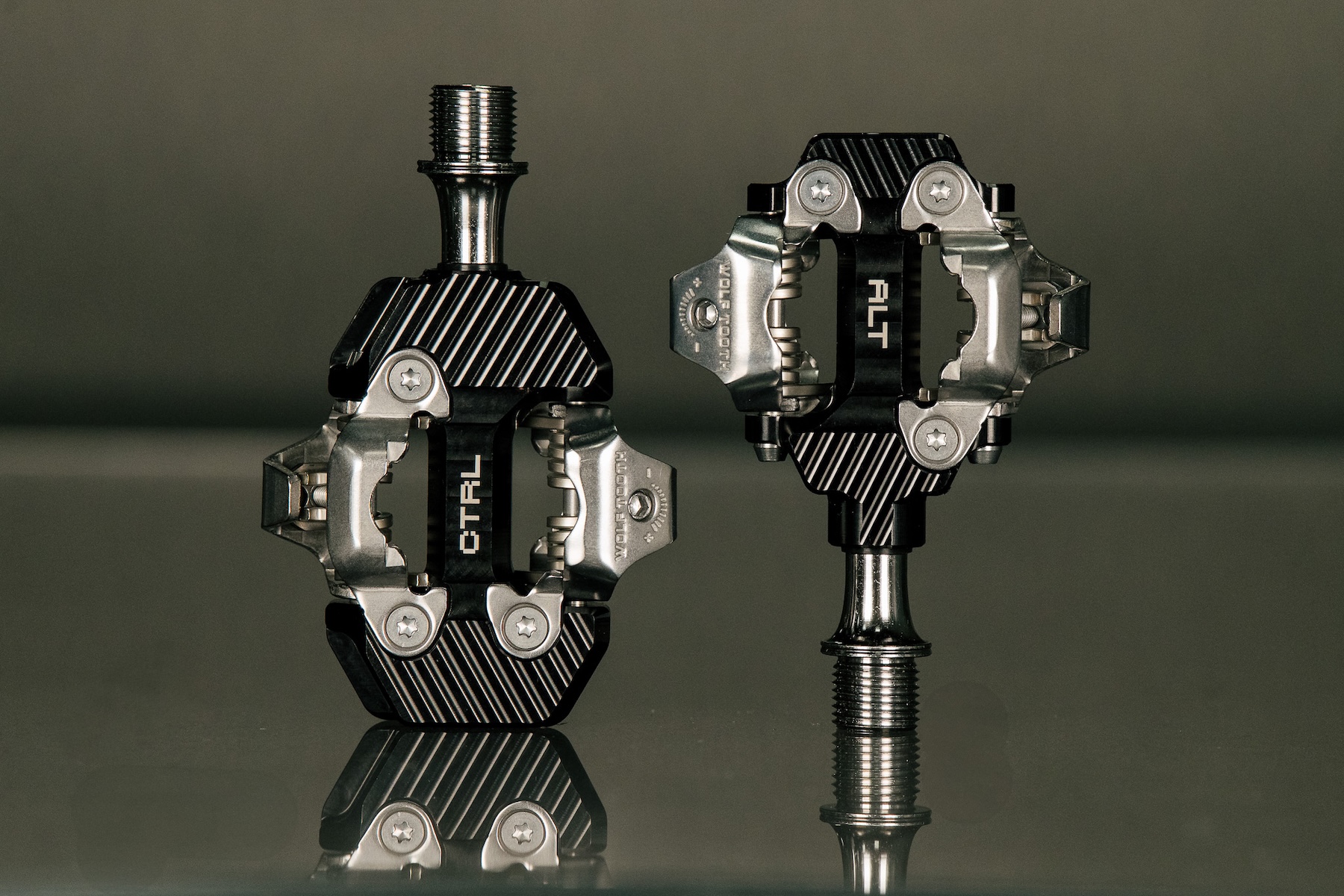
CTRL Trail Pedals
Starting with the most substantial of the bunch, the CTRL pedal is Wolf Tooth’s vision of a Trail pedal. The CTRL has the largest platform area of the bunch, along with a fairly thin 15 mm profile (platform, not mechanism). For reference, the especially thin OneUp Clip pedal measures 14.4 mm in its platform thickness, while the XTR M9220 measures 18.1 mm.
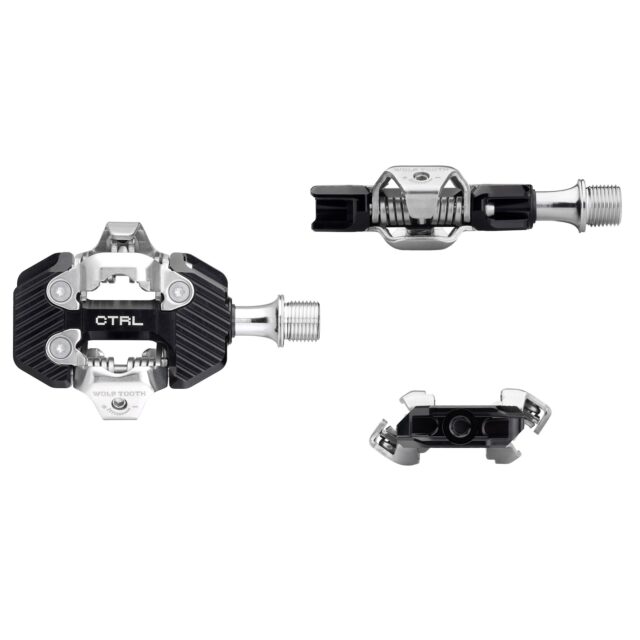
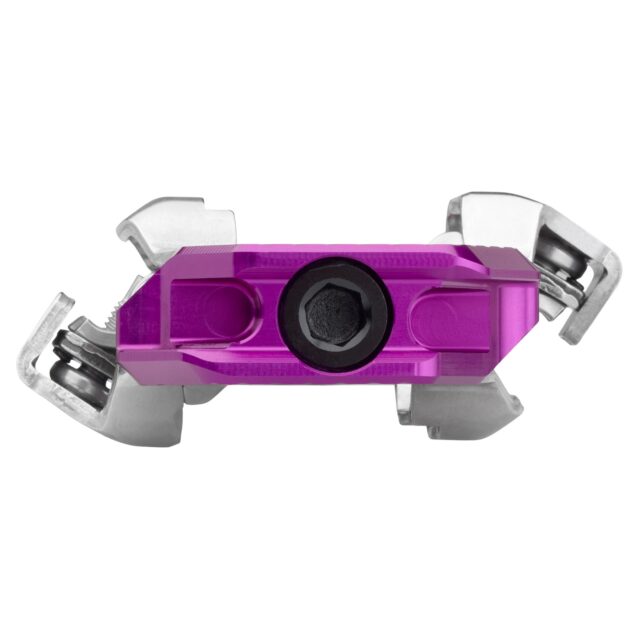
While Wolf Tooth doesn’t provide specific platform width and length measurements, they claim that the CTRL’s platform area of 941 mm2 is quite a bit larger than its competitors, like the XTR M9220 (883 mm2), OneUp Clip (768 mm2), and Hope Union TC (645 mm2) pedals. While this sounds impressive, those measurements provided by Wolf Tooth are a little bit of a black box — while the CTRL’s platform is quite wide, it is visually a lot smaller given that it doesn’t have any extended platform forward or aft of the mechanism like those three other pedals do. That lack of fore and aft extensions of the platform undoubtedly helps in reaching the CTRL’s low 326 g weight.
At least in principle, Wolf Tooth’s emphasis on growing the platform area around the sides of the pedal makes sense. Most shoe contact happens on the sides of the mechanism, so the CTRL’s design should make for a solid shoe-to-pedal interface, but we’ll have to see how that plays out in testing.
ALT XC Pedals
Many of the same talking points from the CTRL pedals carry over to the ALT as well, just dialed back a bit in the name of further weight savings. The small platform is still 15 mm thick, with a claimed area of 443 mm2. They’re quite similar to other diminutive XC-focused pedals while still offering a small bit of usable platform area.
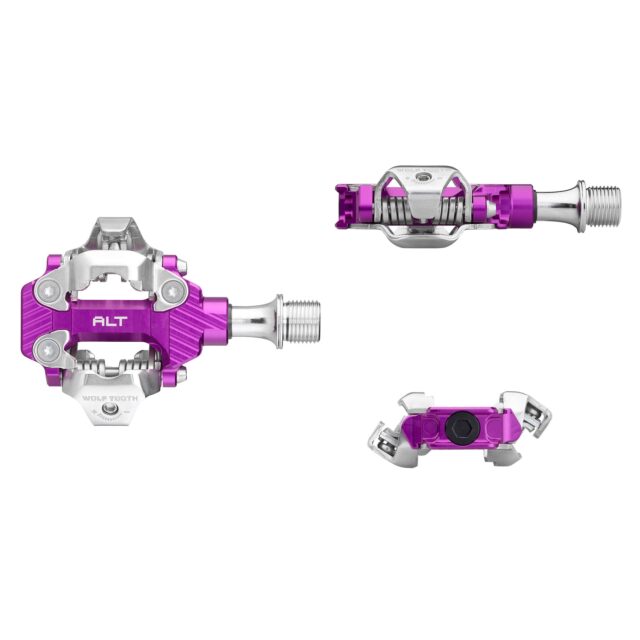
DEL Gravel Race Pedals
The DEL pedals are aimed at Gravel racing, with an interesting mashup of features. The platform size is larger than the ALT, with an area of 559 mm2, but they’re both extremely lightweight (216 g per pair) and very thin (14.7 mm) thanks to a one-sided platform design. The thinking here is that the larger platform allows for maximal power transfer, while the one-sided design cuts weight. Of course, the downside of a one-sided design is that clipping in and out can be more finicky than with a two-sided one, but that shouldn’t be a particularly huge deal for Gravel applications.
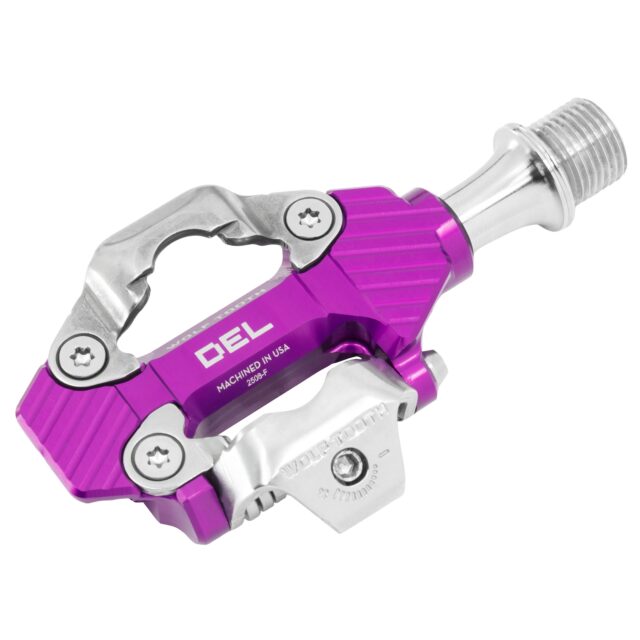
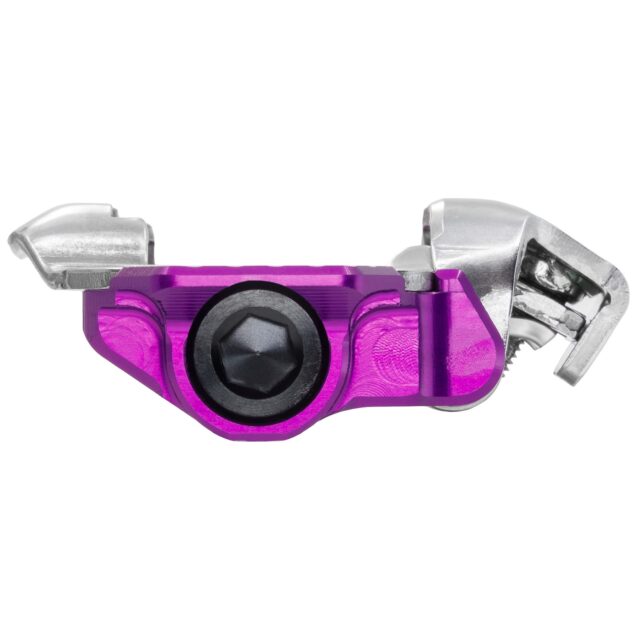
Some Questions / Things We’re Curious About
(1) Not all SPD-based mechanisms feel the same, so where does Wolf Tooth’s design fall alongside other similar SPD pedal designs?
(2) How does Wolf Tooth’s unconventional platform shaping factor into their on-trail feel? Does the focus on shoe contact on the sides of the pedal have any downsides?
Bottom Line (For Now)
Wolf Tooth’s new pedals break the mold a bit in their size, shape, and features, and we think it’s an impressively creative first foray into the world of clip pedals. They aren’t cheap, but they’re made in the US from quality materials, and the Right to Repair program should make for an exceptionally long service life. We’ve started testing the Trail-focused CTRL pedals and are excited to see how they hold up over a long, dark, wet winter of riding here in the Pacific Northwest.
Flash Review: Our Initial On-Trail Impressions
BLISTER+ members and those who purchase our Digital Access Pass can check out the Flash Review below to read our initial on-trail impressions. Get our Digital Access Pass to view all our Flash Reviews and Deep Dives, or become a BLISTER+ member today to get access to that and a LOT more, including the best worldwide Outdoor Injury Insurance, exclusive deals and discounts on skis, personalized gear recommendations from us, and much more.
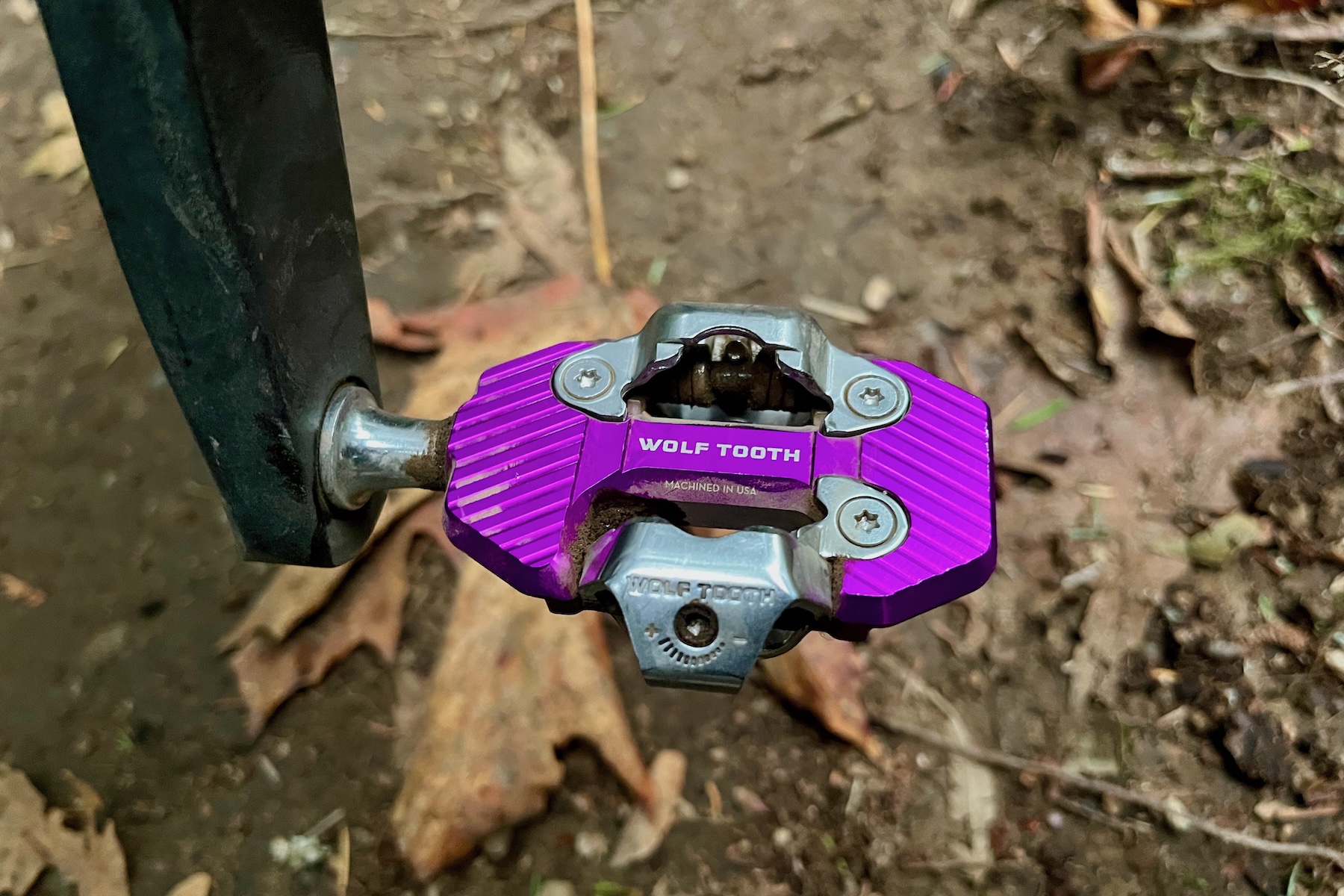
Flash Review: Wolf Tooth CTRL Clip Pedals
Wolf Tooth just launched their first clip pedals, and we’ve started riding their unique, Trail-focused CTRL design. Our Flash Review has our initial impressions.
Blister’s Flash Reviews and Deep Dives are accessible to those who purchase one of our paid subscriptions
To get our comprehensive Deep Dives and our initial, unfiltered reports on new gear, become a member and receive many other services, deals, and discounts.
If you’re already an active member, please log in.
(If you’re already logged in and a member in good standing and seeing this message in error, please refresh this page in your browser.)
